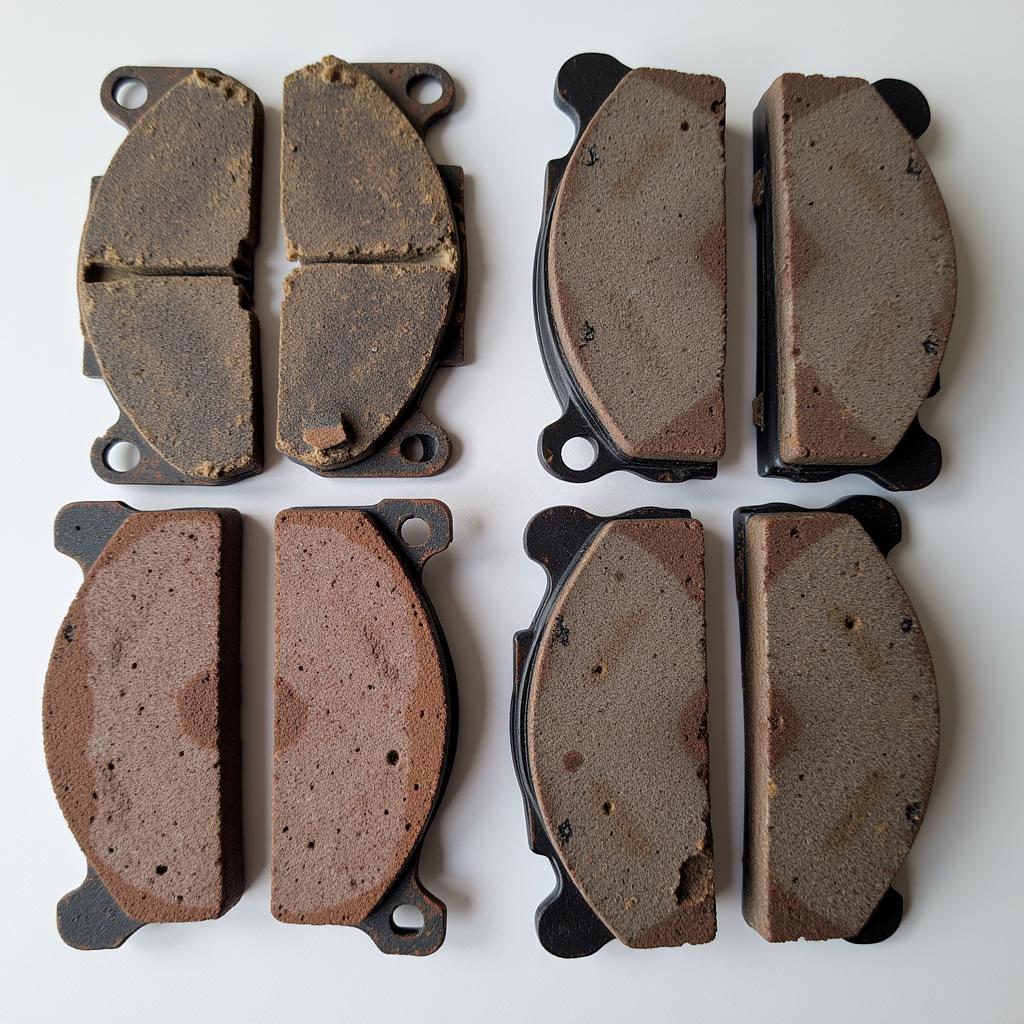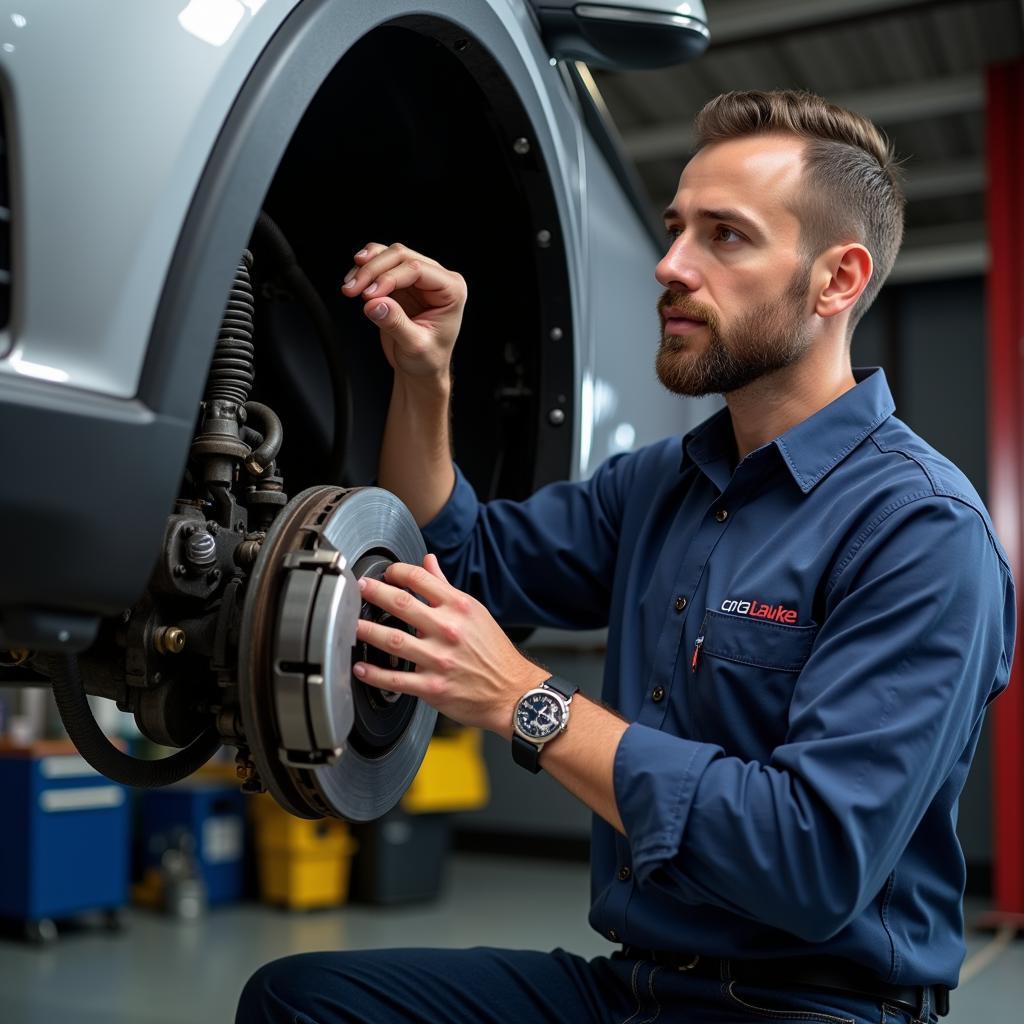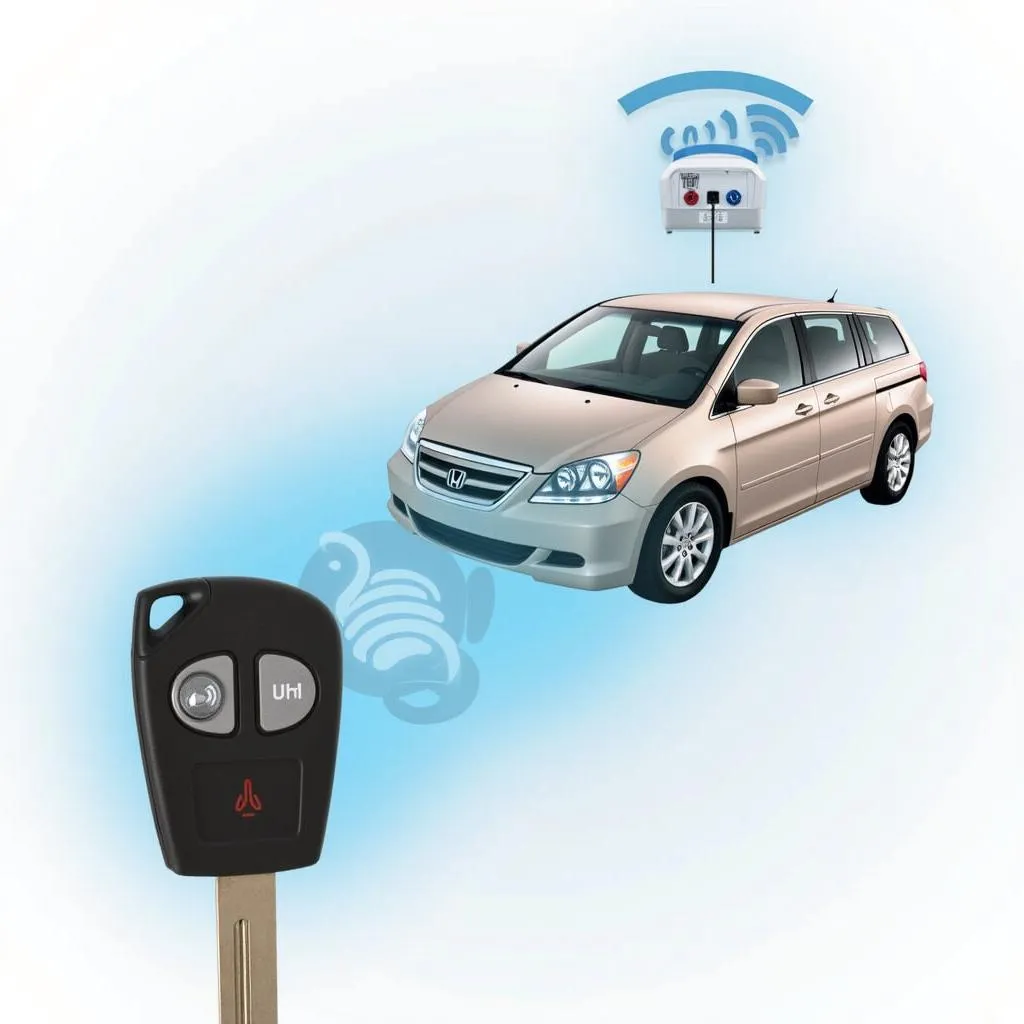The brake warning light on your 2003 Honda Odyssey is a crucial safety feature, illuminating on your dashboard to signal potential issues within your braking system. While it can be alarming, understanding the common causes and solutions can help you address the issue promptly and safely.
Decoding the Warning: What Triggers the Brake Light?
The brake warning light can be triggered by several factors, ranging from simple maintenance needs to more serious mechanical failures. Here’s a breakdown of the most common culprits:
- Low Brake Fluid: This is the most frequent cause. Brake fluid is essential for transmitting force from the brake pedal to the wheels. A leak in the system or worn brake pads can lead to low fluid levels.
- Worn Brake Pads: Brake pads naturally wear down with use. When they reach a certain thinness, the brake pad wear sensor triggers the warning light.
- Faulty Brake Light Switch: This switch, located behind the brake pedal, activates the brake lights when you apply the brakes. A malfunctioning switch can illuminate the warning light.
- ABS Issue: If your 2003 Odyssey has an Anti-lock Braking System (ABS), a problem within this system (like a faulty sensor) can trigger the warning light.
- Parking Brake Engaged: Sometimes, the warning light might be on simply because the parking brake is not fully disengaged.
Troubleshooting the 2003 Honda Odyssey Brake Warning Light
Before rushing to a mechanic, there are a few checks you can perform yourself:
- Check the Parking Brake: Ensure the parking brake is fully released. If the light stays on, move on to the next step.
- Inspect Brake Fluid Level: Locate the brake fluid reservoir under the hood (refer to your owner’s manual). If the fluid level is below the “MIN” mark, add the appropriate brake fluid.
- Visually Inspect the Brake System: Look for any signs of leaks in the brake lines, hoses, and calipers. If you notice any leaks or damaged components, seek professional help immediately.
When to Seek Professional Help
If the brake warning light remains illuminated despite checking the fluid level and parking brake, it’s crucial to consult a qualified mechanic. Diagnosing complex brake issues, especially those related to the ABS, requires specialized tools and expertise.
“Attempting to fix complex brake problems without proper knowledge and tools can be dangerous,” cautions John Miller, a seasoned automotive engineer with over 20 years of experience. “Brakes are a critical safety system, and any repairs should be handled by professionals.”
Preventing Future Brake Warning Lights
Regular maintenance is key to preventing future brake issues and ensuring your 2003 Honda Odyssey’s safety:
- Regular Brake Inspections: Aim for a brake inspection every 12,000 miles or annually.
- Timely Brake Pad Replacement: Replace brake pads when they reach the recommended thickness (consult your owner’s manual).
- Brake Fluid Flush: Flush and replace your brake fluid every 2-3 years or as recommended by your mechanic. This prevents corrosion and maintains optimal braking performance.
 Comparing Worn and New Brake Pads
Comparing Worn and New Brake Pads
2003 Honda Odyssey Brake Warning Light FAQs:
Q1: Can I drive my Honda Odyssey with the brake light on?
A: It’s strongly advised against driving with the brake warning light on. It signals a potential problem with your braking system, compromising your safety and others on the road.
Q2: How much does it cost to fix a brake warning light on a 2003 Honda Odyssey?
A: The cost varies depending on the underlying cause. A simple brake fluid top-up might cost under $20, while replacing brake pads can range from $150 to $300 per axle. More complex repairs, like fixing an ABS issue, can be more expensive.
Q3: How long can I drive with worn brake pads?
A: It’s impossible to give a definitive timeframe as brake pad wear depends on driving habits and conditions. However, if the brake warning light is on due to worn pads, it’s crucial to get them replaced immediately.
 Mechanic Inspecting Car Brakes
Mechanic Inspecting Car Brakes
Don’t Ignore the Warning!
The brake warning light on your 2003 Honda Odyssey should never be ignored. Addressing the issue promptly ensures your safety and prevents potentially costly repairs in the long run. Remember, when it comes to brakes, prevention and timely maintenance are always better than a cure.


